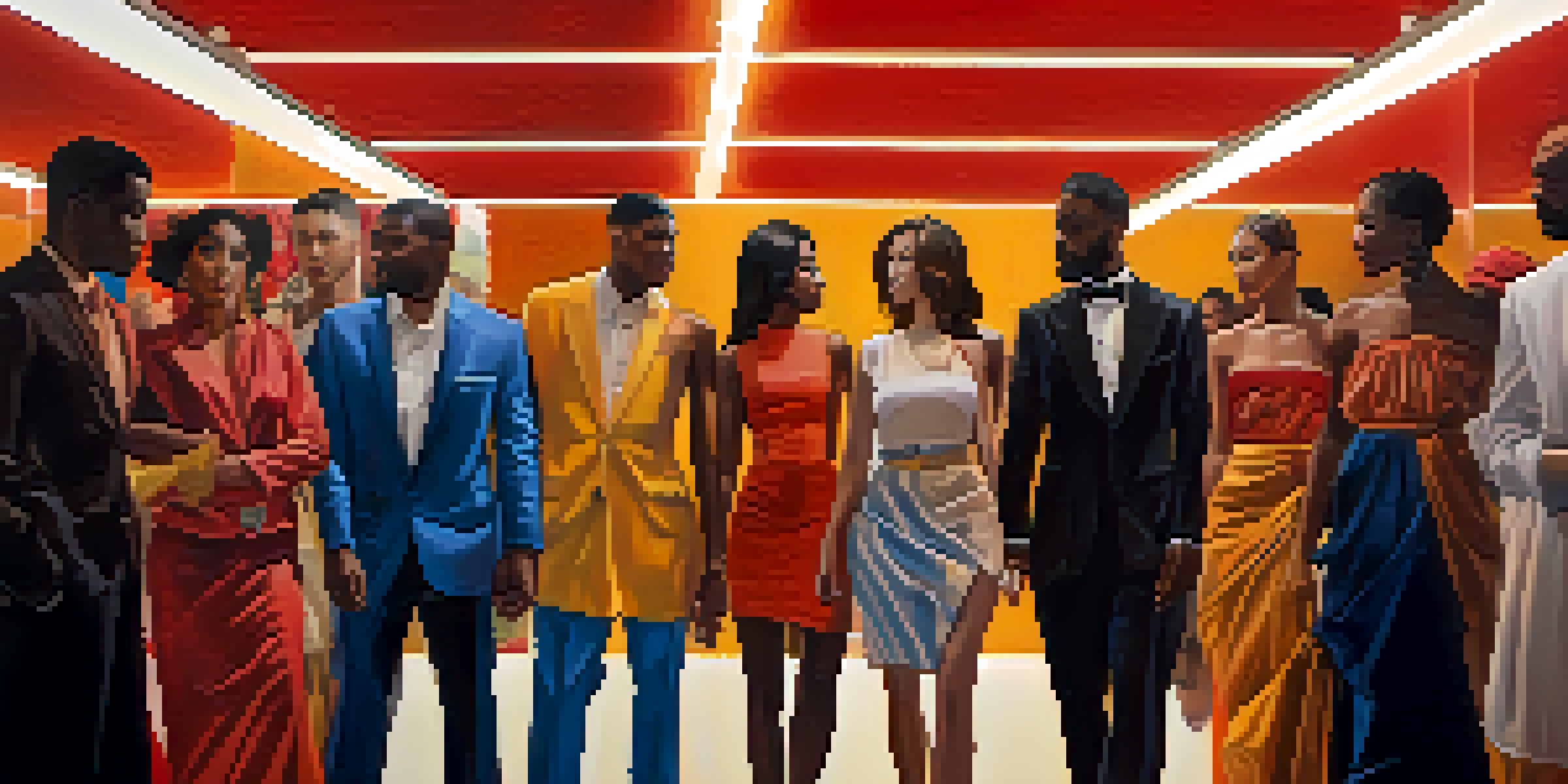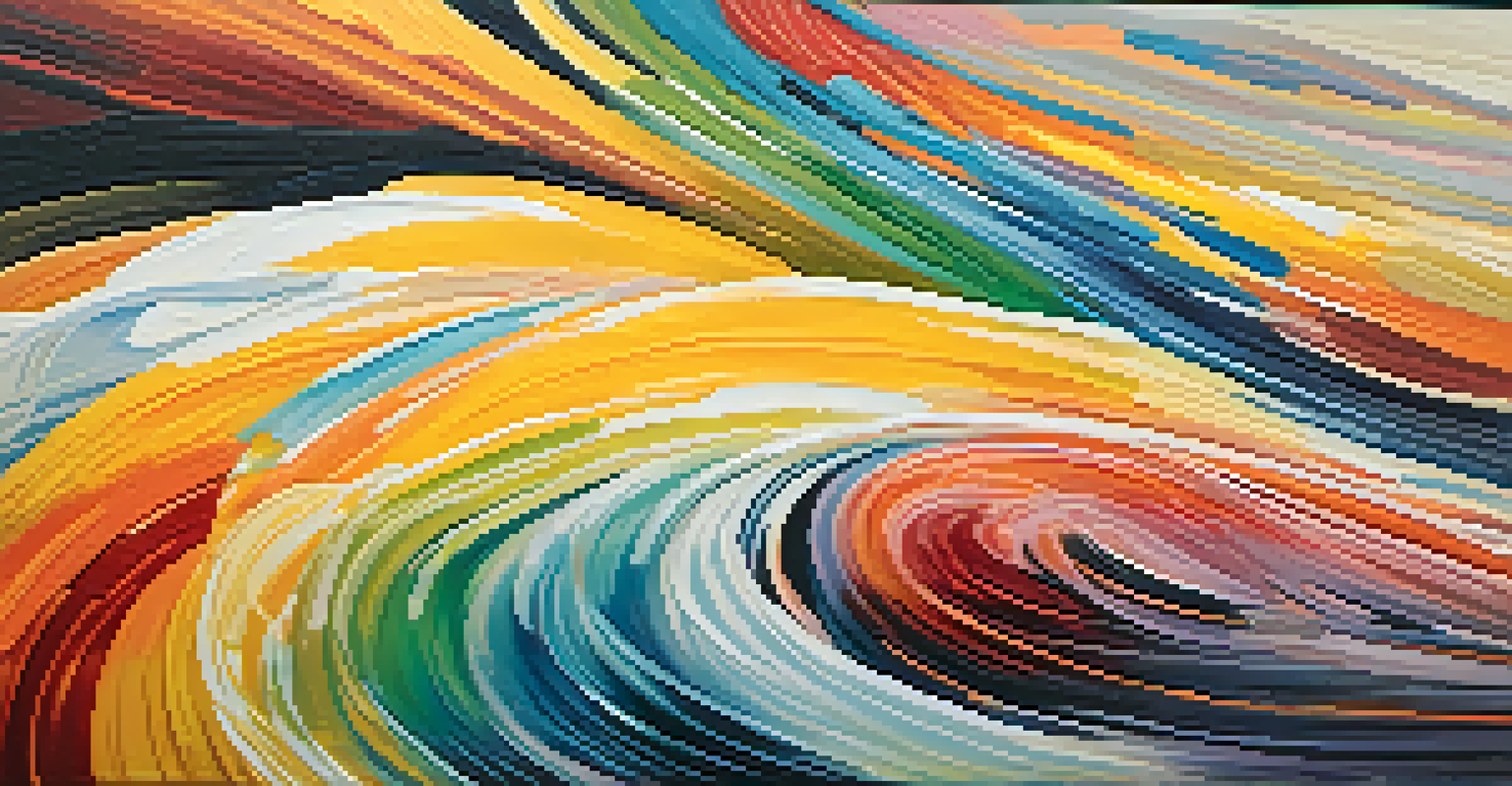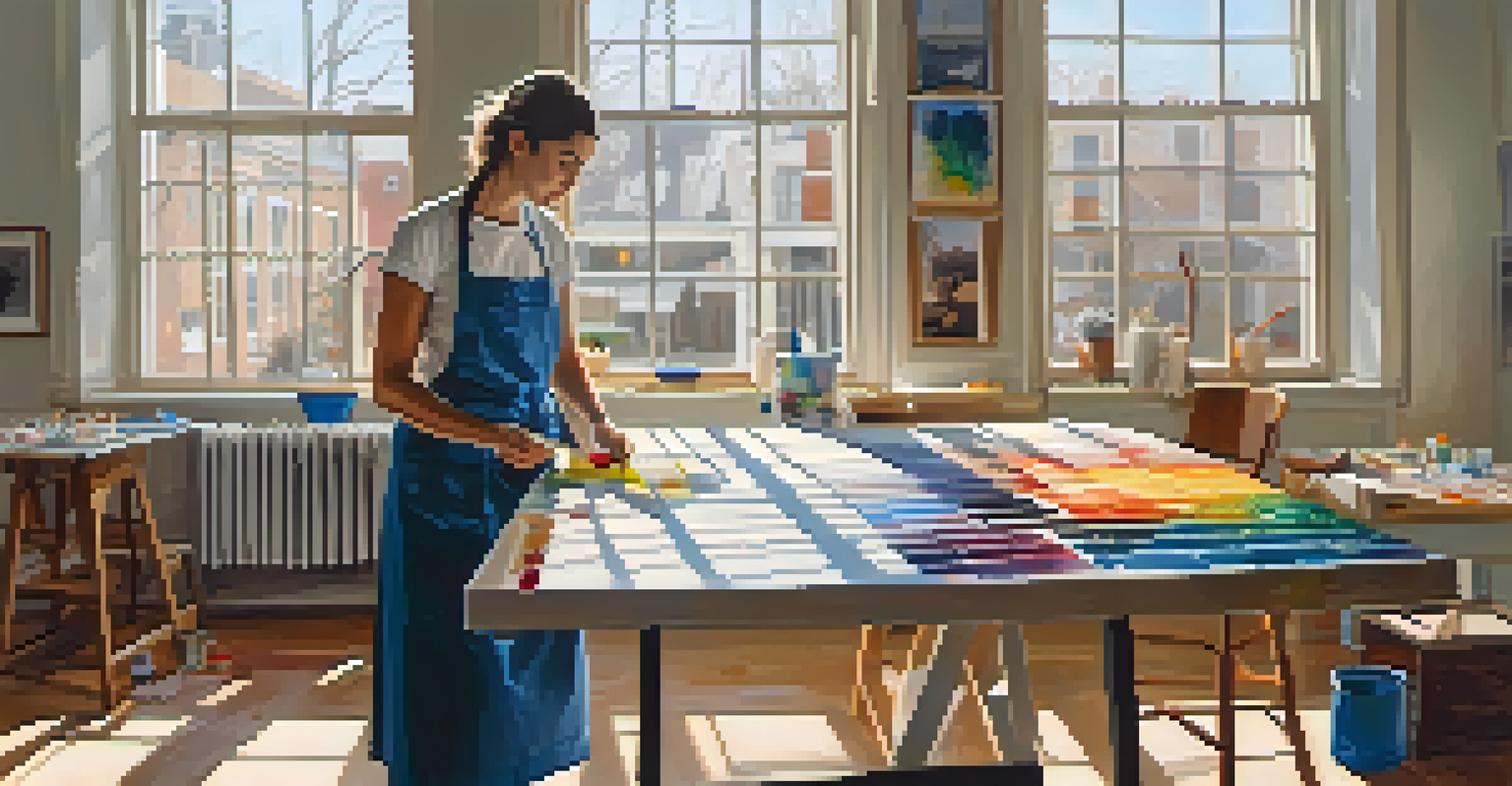Contemporary Painting: Reflections of Identity and Society

Understanding Contemporary Painting's Role
Contemporary painting serves as a powerful medium through which artists explore complex themes of identity and society. Unlike traditional forms, it often breaks boundaries, allowing for a more personal and immediate expression. Artists today utilize various techniques and styles to reflect their views on the world around them, making their work highly relevant.
Art is not what you see, but what you make others see.
One can think of contemporary painting as a mirror held up to society, revealing not just the surface but the underlying currents of human experience. Just as a mirror reflects our physical appearance, these works reflect cultural, social, and personal narratives. This engagement with the viewer prompts introspection and dialogue about our collective existence.
Through examining contemporary painting, we gain insights into how artists interpret their identities and the societal issues they face. This exploration invites us to question our own identities and our place within the broader societal framework, fostering a deeper understanding of ourselves and the world.
Identity: A Central Theme in Art
Identity remains a central theme in contemporary painting, as artists often grapple with questions of who they are in relation to the world. Many choose to depict their cultural backgrounds, gender identities, or personal experiences, allowing for a richer understanding of diversity. For instance, artists from marginalized communities frequently use their canvases to assert their identities and challenge societal norms.

These identity-focused works can resonate deeply with viewers, inviting them to connect with the artist's experiences or reflect on their own. This personal connection transforms the viewing experience, elevating art from mere decoration to a platform for dialogue. It’s as if each brushstroke is a step towards understanding the intricate tapestry of human life.
Art as a Reflection of Society
Contemporary painting serves as a mirror to society, capturing cultural, social, and personal narratives that prompt introspection and dialogue.
Moreover, the exploration of identity in contemporary painting often sparks broader discussions about inclusivity and representation in art. By showcasing diverse perspectives, artists challenge the traditional narratives that have dominated the art world, making space for new voices and stories.
Society's Influence on Contemporary Artists
Contemporary artists are keen observers of the world, and their work often reflects the societal issues of their time. From political unrest to environmental concerns, these themes manifest in their paintings, prompting viewers to engage with current events. This societal lens allows art to act as both a commentary and a catalyst for change.
The best artist has no conception that a marble block does not exist, and this is how he is able to create.
For example, many artists tackle the climate crisis through their work, using vivid imagery to evoke emotion and urgency. By doing so, they not only raise awareness but also inspire action among their audience. It's a reminder that art can be a powerful tool for advocacy and social justice.
As we explore these societal themes in contemporary painting, we recognize the interconnectedness of art and life. This relationship encourages us to reflect on our own roles within society, making art a platform for collective consciousness and action.
The Impact of Technology on Art Creation
Technology has profoundly influenced contemporary painting, expanding the tools available to artists. Digital painting, for instance, allows for experimentation and innovation that traditional methods may not offer. This blend of technology and traditional techniques often results in unique and captivating works.
Moreover, social media platforms have transformed how art is shared and consumed. Artists can now reach a global audience, fostering connections and collaborations that transcend geographical boundaries. This digital landscape not only amplifies diverse voices but also democratizes access to art, allowing more people to engage with contemporary themes.
Identity Shapes Artistic Expression
Artists explore themes of identity in their work, using personal and cultural backgrounds to foster understanding and challenge societal norms.
As artists embrace these technological advancements, they often reflect on the implications of a digital society in their work. This exploration poses questions about authenticity, connection, and the evolving nature of human experience in an increasingly virtual world.
Cultural Narratives in Contemporary Painting
Cultural narratives play a significant role in shaping contemporary painting, as artists draw from their heritage and personal histories. By incorporating elements of their culture, they create works that celebrate diversity and challenge stereotypes. This cultural lens enriches the art, inviting dialogue about identity and representation.
For instance, Indigenous artists often use traditional motifs and stories in their work to reclaim narratives and assert their identities. This practice not only honors their heritage but also educates audiences about the richness of their cultures. Such artworks serve as a bridge, connecting the past with the present and fostering mutual understanding.
In this way, contemporary painting becomes a canvas for cultural expression and awareness. It encourages us to appreciate the beauty of different narratives while prompting critical conversations about the complexities of cultural identity in our globalized society.
Emotional Resonance in Contemporary Art
One of the most compelling aspects of contemporary painting is its ability to evoke emotions. Artists often pour their feelings, struggles, and triumphs onto the canvas, creating works that resonate on a personal level. This emotional depth invites viewers to connect with the art in a profound way, often leading to introspection.
Take, for example, abstract paintings that use color and form to convey feelings of joy, despair, or confusion. These works can elicit strong emotional responses, allowing viewers to reflect on their own experiences and emotions. It’s like a conversation between the artist and the viewer, where feelings are shared and understood.
Technology Transforms Art Creation
The integration of technology in contemporary painting expands creative possibilities and democratizes access to art, allowing diverse voices to be heard globally.
By tapping into this emotional resonance, contemporary artists create spaces for healing, empathy, and connection. Their paintings remind us that art is not just about aesthetics; it's a vessel for communicating the complexities of the human experience.
The Future of Contemporary Painting
As we look toward the future, the evolution of contemporary painting continues to unfold in exciting ways. Emerging artists are pushing boundaries, experimenting with new mediums, and integrating diverse influences into their work. This dynamic landscape ensures that contemporary painting remains a vibrant and relevant form of expression.
Moreover, the ongoing discussions around identity and society will likely shape the themes and approaches of future artists. As societal issues evolve, so too will the narratives explored in contemporary painting, reflecting the ever-changing human experience. This adaptability makes contemporary art a living, breathing entity that resonates with each generation.

In embracing the future, contemporary painting will continue to foster conversations about identity, society, and the human condition. It serves as a reminder that art is not static; it evolves with us, offering insights and reflections that inspire change and understanding.